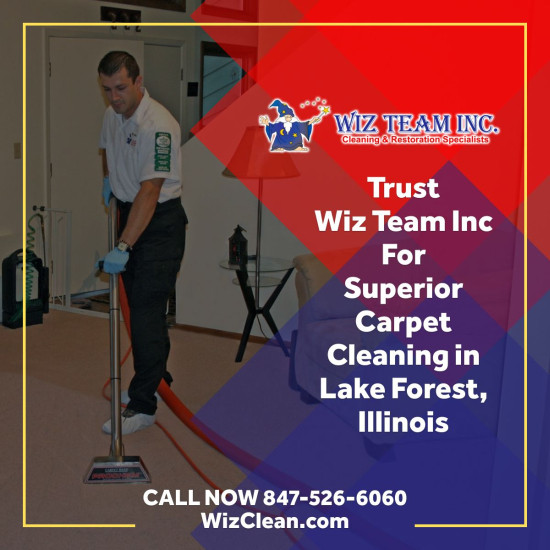For many Lake Forest, Illinois, residents, upholstered furniture is the center of home life—a source of comfort and a reflection of personal style. Yet, it is this very comfort that conceals a common and often overlooked threat to home health: the accumulation of microscopic contaminants within the fabric itself. Unlike hard surfaces, upholstery acts as a continuous filter, trapping everything from pollen and pet dander to skin oils and dust mite debris. Addressing this issue is not just about keeping a sofa looking new; it is a fundamental step in maintaining the healthy indoor air quality that every home deserves.

What’s the Risk?
Upholstered furniture, with its complex weaves and plush stuffing, becomes a passive repository for pollutants that circulate within the home. This creates an environment where several risks can thrive:
Allergen Concentration: Upholstery is a prime breeding ground for dust mites, microscopic organisms that feed on dead skin flakes. Their waste products are potent allergens, and combined with trapped pet dander and seasonal pollen, they can create a concentrated source of respiratory irritation right on your favorite armchair.
Volatile Organic Compounds (VOCs): New furniture can off-gas VOCs, but older furniture traps and releases odors from cooking, smoking, and cleaning products. The fabrics also absorb body oils and sweat, which decompose over time, leading to persistent, stale odors.
Accelerated Deterioration: Embedded dirt and sharp particulate matter rub against the fabric fibers every time someone sits down. This friction acts like sandpaper, slowly breaking down the material from the inside out and causing premature wear, discoloration, and eventual fabric damage.
Air Quality Impact: As the surface of the upholstery is disturbed—when a person sits down or a child jumps on the sofa—these trapped particles are aerosolized, briefly contaminating the air you breathe.
These risks underscore that a seemingly clean piece of furniture can be a silent source of indoor air pollution, impacting individuals with respiratory conditions or allergies the most.
How to [Prevent/Handle] the Problem
While professional intervention is necessary for deep sanitation, homeowners can significantly mitigate surface contamination and extend the life of their upholstery with consistent home care. Here are 3–5 practical, DIY-friendly tips:
Vacuum with Proper Attachments: Use the crevice and brush attachments of your vacuum cleaner weekly. Focus not just on the seating surface but also on the seams, armrests, and behind the cushions where dust is most likely to settle and condense.
Blot, Don't Rub: Treat spills immediately. Use a clean white cloth to blot the liquid, working from the outside of the spill toward the center. Rubbing forces the liquid deeper into the padding and can permanently damage the fabric structure.
Use Protective Throws: For high-traffic seating or homes with pets, placing washable throws or blankets over the most frequently used spots can intercept sweat, oils, and pet dander before they reach the permanent upholstery fabric.
Rotate Cushions Regularly: If your furniture has removable cushions, rotate and flip them weekly. This promotes even wear and helps release trapped dust and particulate matter from the interior, making vacuuming more effective.
"The biggest mistake homeowners make is only vacuuming the visible parts of the couch," says George Smile, owner of Wiz Team Inc. "Consistent attention to the seams and crevices, combined with immediate spill treatment, is your first and most vital line of defense against long-term damage and odor."
When DIY Isn’t Enough
While diligent maintenance keeps the surface clean, household vacuums and consumer spot cleaners simply lack the power and specialized chemistry needed to extract deep-seated body oils, complex residues, and microscopic allergens from the inner padding and backing of the fabric. Many store-bought chemicals can leave behind sticky residues that actually attract dirt faster or cause irreversible damage like fading or shrinking. This is when professional upholstery services are required. Wiz Team Inc., a trusted local company serving the Lake Forest area, specializes in advanced, fabric-safe cleaning. They utilize professional-grade, low-moisture extraction methods tailored to your specific upholstery type, ensuring deep cleaning that removes entrenched pollutants without the risk of over-wetting or fabric damage.

Conclusion
Your upholstered furniture is integral to your home's comfort, but its cleanliness is critical to your home's health. By marrying diligent daily maintenance with periodic, expert professional cleaning, you can effectively eliminate hidden pollutants and ensure your seating remains a fresh, healthy, and inviting part of your living space. For expert upholstery cleaning solutions in Lake Forest that restore both beauty and hygiene, you can rely on George Smile and his dedicated team at Wiz Team Inc. to provide the specialized care your furniture requires.




